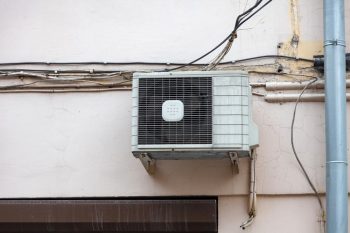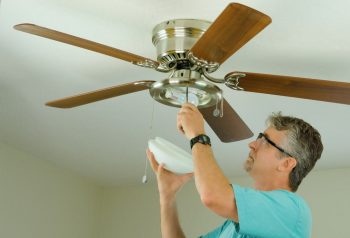
Ceiling fans are an essential part of many households, providing much-needed relief from hot weather and improving air circulation. However, like any other appliance, they can sometimes exhibit issues, such as a grinding noise. This article aims to provide a comprehensive understanding of why your ceiling fan might be making a grinding noise and how to potentially resolve the issue.
Your ceiling fan might be making a grinding noise due to unbalanced blades, loose screws, or motor issues, often related to dry or unlubricated bearings. You can troubleshoot this by cleaning the fan blades, tightening any loose screws, lubricating the motor, and checking blade alignment. If the noise persists, it may be best to seek professional assistance as it could indicate a more serious issue.
Common Causes of Grinding Noise in Ceiling Fans
There are several reasons why your ceiling fan may be making a grinding noise. Some of the most common causes include:
- Unbalanced Blades: Over time, dust and dirt can accumulate on the fan blades, causing them to become unbalanced. This imbalance can lead to the fan wobbling and producing a grinding noise.
- Loose Screws: Ceiling fans have numerous screws that can become loose over time due to the constant motion of the fan. These loose screws can cause parts of the fan to rub against each other, creating a grinding sound.
- Motor Issues: The motor is the heart of the fan, and if it encounters any problems, it can result in various noises, including a grinding noise. Dry or unlubricated bearings in the motor are often the culprit behind this noise.
Steps to Troubleshoot a Grinding Ceiling Fan
If your ceiling fan is making a grinding noise, don’t fret. There are several steps you can take to troubleshoot and potentially resolve the issue:
- Inspect the Fan: Look for any visible issues, such as wobbling, dirty blades, or damage to the blades like warping or cracks.
- Clean the Fan Blades: Use a damp cloth to clean the blades, removing any dust or grime that may have accumulated.
- Tighten the Screws: Check for any loose screws on the fan and tighten them. Pay special attention to the screws on the motor housing, blades, and light fixtures.
- Lubricate the Motor: If the grinding noise persists, it could mean that the motor needs oil. Refer to your ceiling fan manual for the type of oil to use and the location of the oil hole.
- Check Blade Alignment: Misaligned blades can scrape against the motor or other parts of the fan, causing a grinding noise. Gently bend the blade holder up or down until the blade is in line with the others.
When to Seek Professional Assistance
If you’ve tried the steps above and the grinding noise persists, it may be time to consult a professional. A persistent grinding noise could be a sign of a more serious issue, such as electrical problems or damaged internal components. A professional electrician or ceiling fan technician can diagnose and address the issue.
Moreover, if the grinding noise is caused by bad bearings, it’s usually better to replace the fan, as oiling the bearings will only provide a temporary solution, and the noise will likely return.
Conclusion
A grinding noise from your ceiling fan can be annoying and concerning, but in many cases, it can be resolved with a few simple steps. Regular maintenance, such as cleaning the blades, tightening screws, and oiling the motor, can help prevent such issues. However, if the noise persists, don’t hesitate to seek professional help.
Remember, safety should always be your priority. Always turn off the fan and ensure it has completely stopped before working on it. Happy troubleshooting!
Frequently Asked Questions
What type of oil should I use to lubricate the ceiling fan motor?
Typically, you should use a non-detergent motor oil, also known as SAE 20. However, it’s best to refer to your ceiling fan’s manual for specific recommendations.
How often should I clean my ceiling fan blades?
It’s a good practice to clean your ceiling fan blades once every three months. However, if you live in a dusty area or have pets, you might need to clean them more frequently.
How can I tell if my ceiling fan blades are unbalanced?
If your ceiling fan wobbles or vibrates excessively when operating, it’s a likely sign of unbalanced blades. You can also visually inspect the blades to see if they’re aligned; if they appear to be at different angles, they may be unbalanced.
How do I balance my ceiling fan blades?
You can balance your ceiling fan blades by using a fan balancing kit, which can be purchased at most home improvement stores. The kit usually includes weights that you can attach to the blades to balance them.
How often should I lubricate my ceiling fan motor?
The frequency of lubrication depends on the type and model of your fan, but a general rule of thumb is to oil the motor once a year. However, if you notice any unusual noises or a decrease in performance, it might be a good idea to oil the motor sooner.












